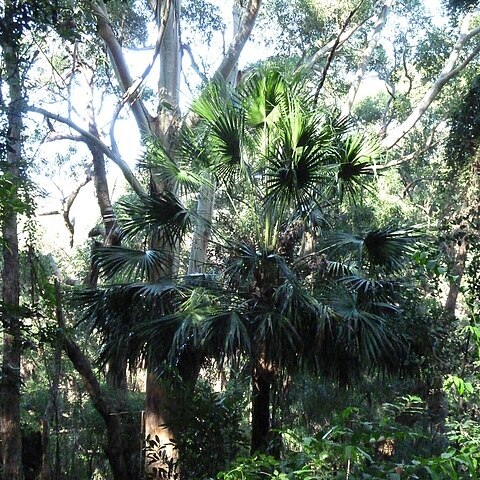It is a tall palm. It can be 30 m tall. The trunk is sturdy and grey. The trunk can be 25-35 cm across. It has rings. The bark is cracked and rough. The leaf stalks are long and slender. The leaves form a large crown. The tips droop. The leaves are shiny green. The ends of the leaves are wavy and form a circle. The leaves are divided for 2/3 their length into segments then these are divided into 2 sharp tips. These hang down. The older leaves often remain on the palm. The flowering stalk is shorter than the leaves. The flower stalk has brown bracts around it. The flowers are cream. Fruit are black. They have a thin waxy bloom. They are round and 20 mm across.
Trunk 10-25 m high, slender, with circular leaf-scars. Crown dense; leaves orbicular in outline, to 1.5 m diam., divided below middle into 40-50 narrow, plicate, acuminate leaflets, entire, or bifid at apex; petioles to 1.2 m long, tough, rigid, spreading to decurved; margin with strong spiny teeth. Panicle to 1.2 m long, glabrous, drooping, repeatedly branched, primary branches thick, often angular, usually curved and flexuous, ultimate branches or spikes 3-7 cm long. Spathe to 30 cm long, lanceolate, ± tomentose. Flowers c. 3 mm long. Drupe globular, 12-20 mm diam., deep purple-blue, 1-seeded, hard, pericarp rather wrinkled, granular within.


